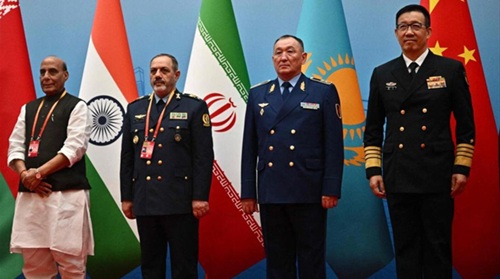| (Mains, General Studies Paper- 2: India and its Neighbourhood- Relations) |
Context
Recent high-level exchanges between India and Iran underscore the evolving civilisational ties and strategic partnership amidst regional geopolitical changes.

India-Iran Relations
Civilisational Ties
- India and Iran are both ancient civilisations with shared cultural, linguistic and religious exchanges since ancient times.
- Persian influence is evident in Indian architecture, languages (Urdu, Hindi) and court traditions.
- Sufi and Shia ties have further strengthened cultural affinity.
Strategic and Economic Dimensions
- Chabahar Port: India’s gateway to Afghanistan and Central Asia, bypassing Pakistan.
- It is linked to the International North-South Transport Corridor (INSTC).
- Energy cooperation: Iran was a major crude oil supplier to India before US sanctions (2019).
- Talks are underway to resume imports amid India’s energy diversification needs.
Regional security
- Cooperation in stabilising Afghanistan
- Combatting extremism and terrorism in the region
Geopolitical balance
- India maintains a balance in its relations with the US, Gulf countries and Iran.
- Iran’s growing ties with China (25-year strategic agreement) add complexity for India.
Challenges
- US sanctions restrict trade and investment
- Banking and insurance barriers
- Uncertainty in Iran’s domestic politics and regional role
Importance to India
- Iran strengthens Act West policy as a complement to Act East.
- It enhances India’s connectivity with Eurasia.
- Diversifies energy and strategic partnerships beyond the Gulf monarchies.
New Horizons for India-Iran Relations
Today, countries of the Global South refuse to be subjected to domination and discrimination. They have embarked on a new path by relying on local models, developing indigenous science and technology, and strengthening their defence and security. Ancient civilisations have a unique role to play in this historic transformation.
Cultural Influence
- As two of the world’s oldest and richest civilisations, Iran and India have shaped global culture for centuries.
- Both civilisations eschewed war, valued peace and fought only to defend against aggression.
- Even when defeated militarily, they reshaped the conquerors through their cultural influence, imparting to them their knowledge of statecraft, literature, philosophy, art and architecture.
- Iran’s civilisational values continued in a new form after the advent of Islam, while India prospered more under Islamic influence.
- India defended the rights of the Global South through its anti-colonial struggle and leadership of the Non-Aligned Movement.
- Iran resisted Western domination by nationalising its oil industry and through the Islamic Revolution.
- Together, both nations embrace values such as peace, spirituality and respect for nature that are urgently needed today.
- These values can guide humanity in confronting structural violence, environmental crises and social degradation.
South-South Cooperation
By strengthening South-South cooperation, playing an active role in forums such as BRICS, upholding humanitarian and ethical principles and pursuing transformative projects such as the International North-South Transport Corridor (INSTC), India and Iran can together lay the foundation for a just and humane order.



